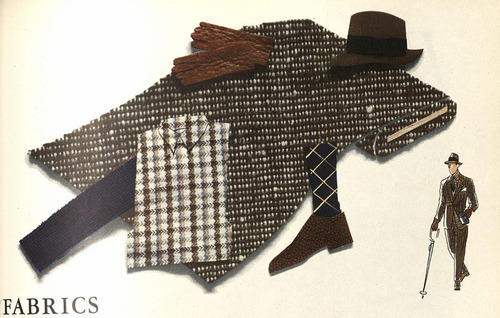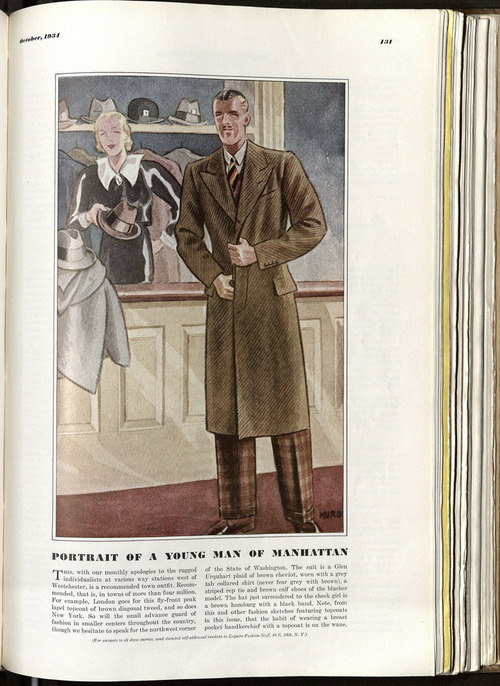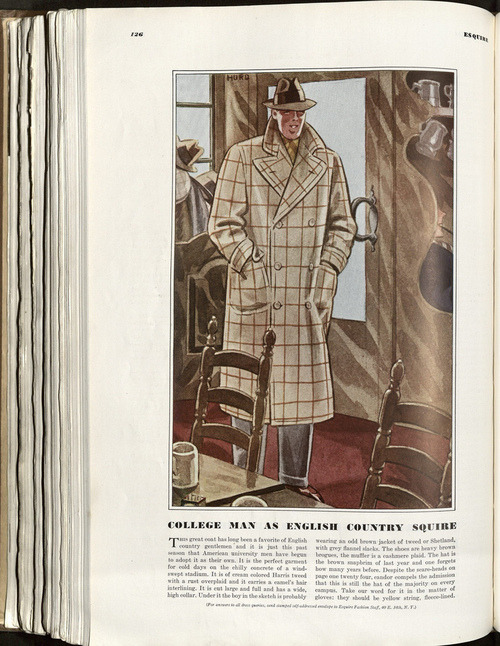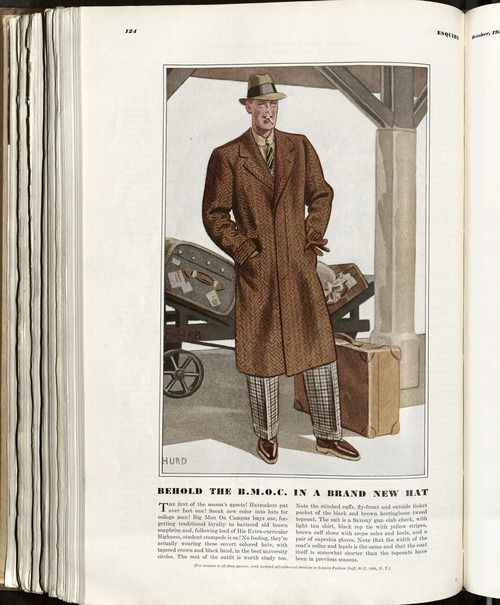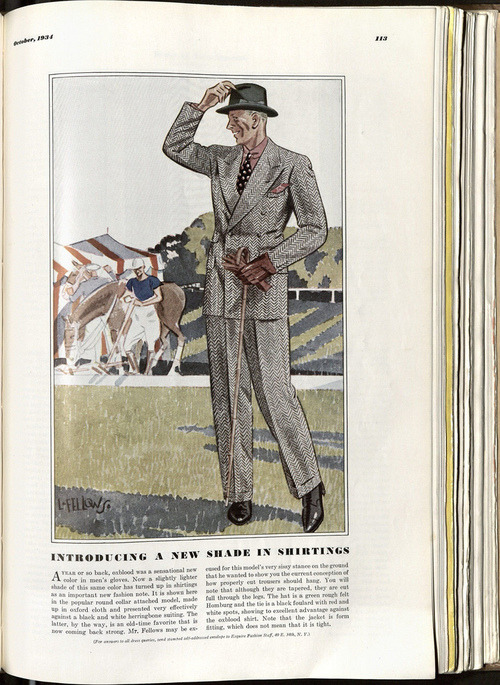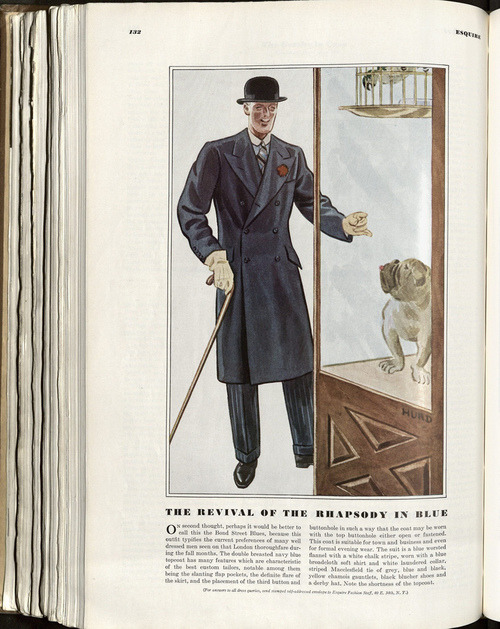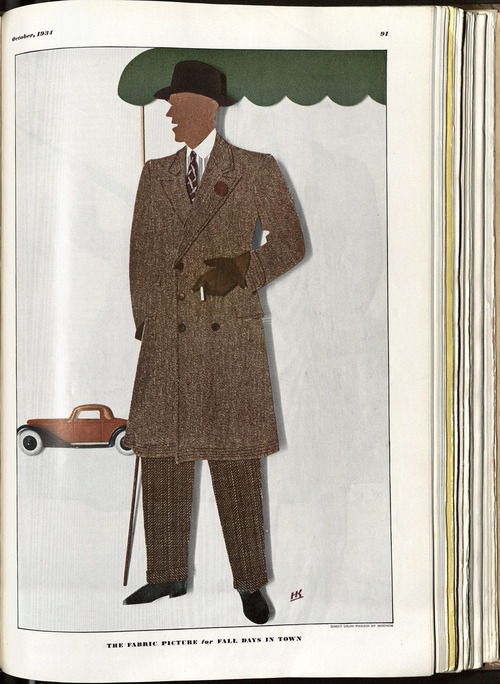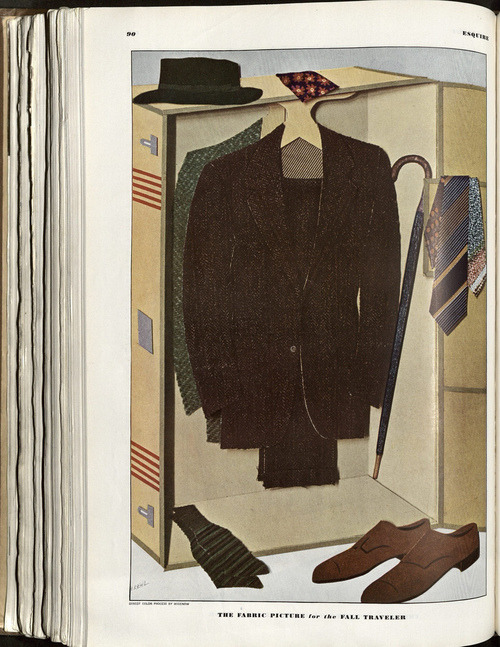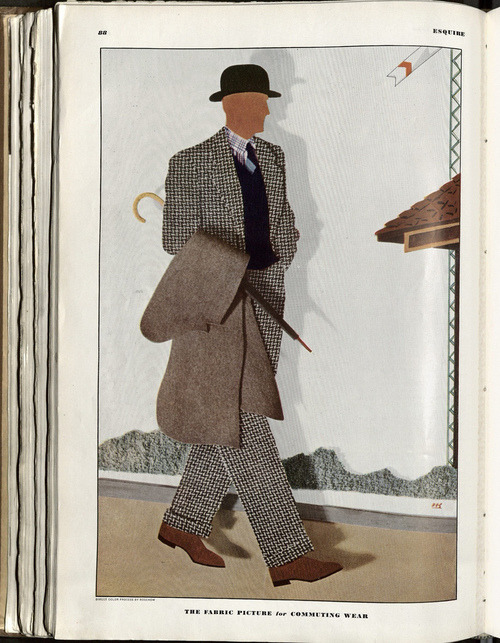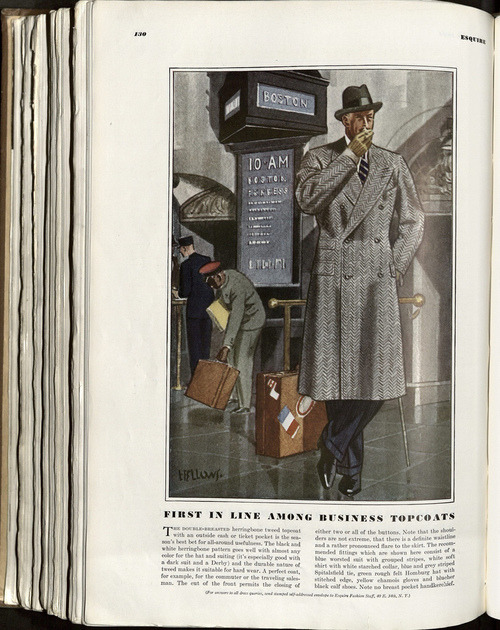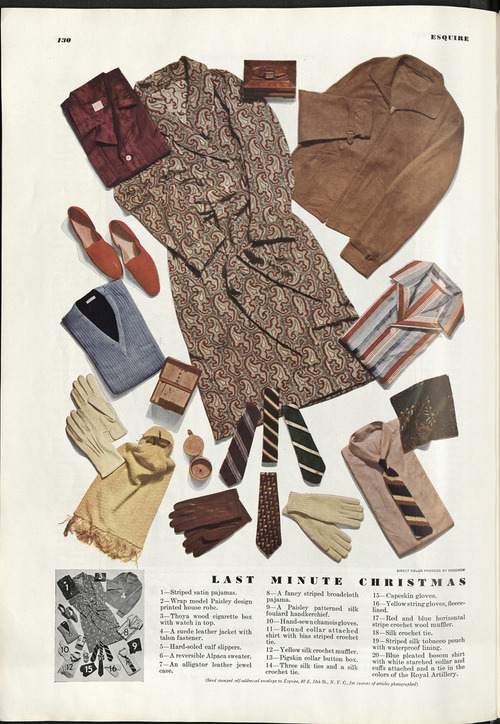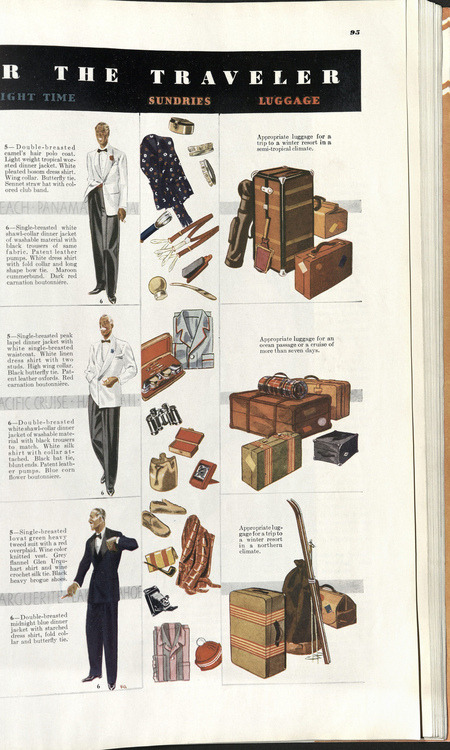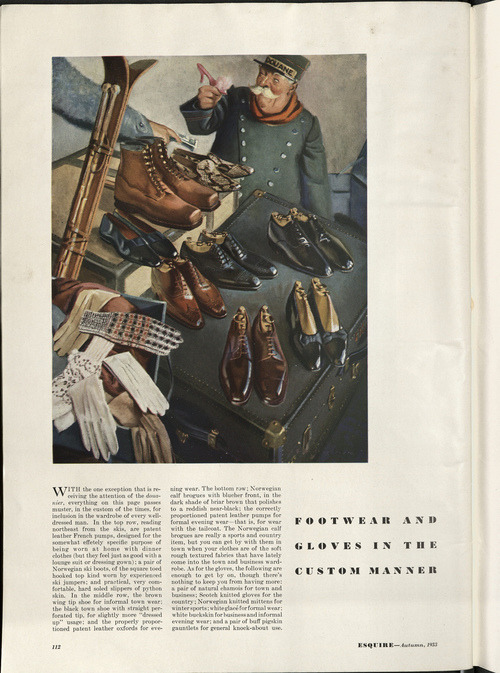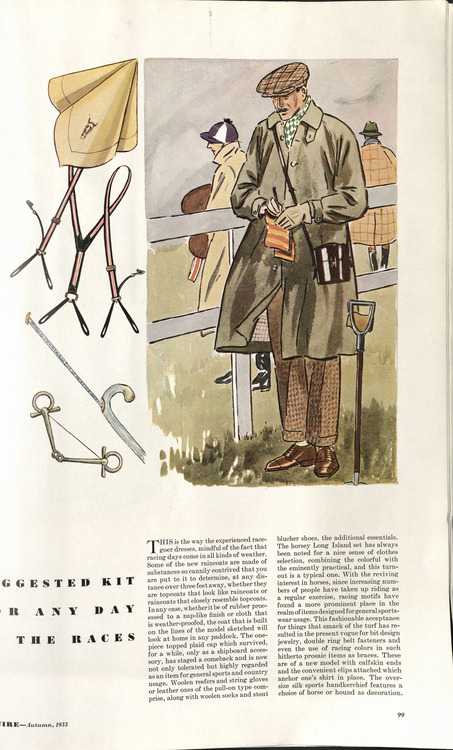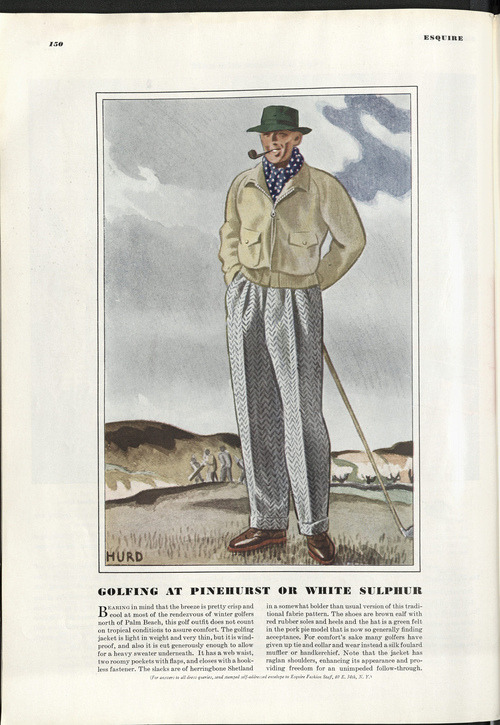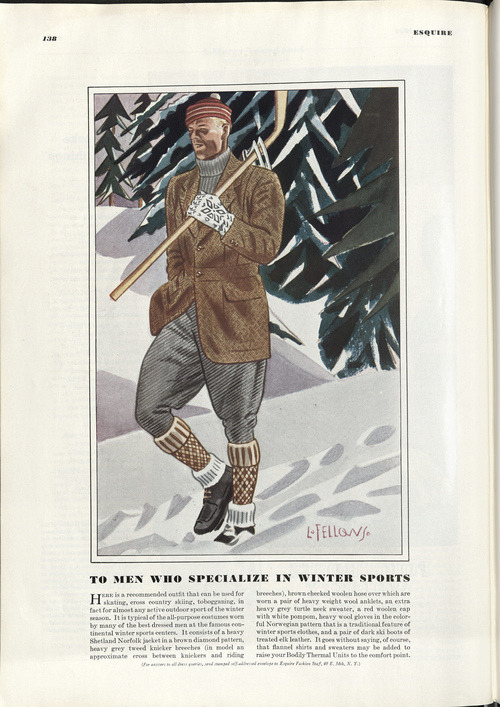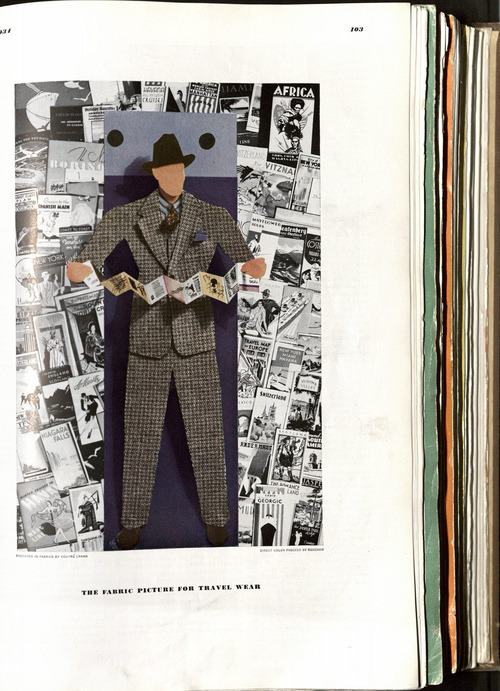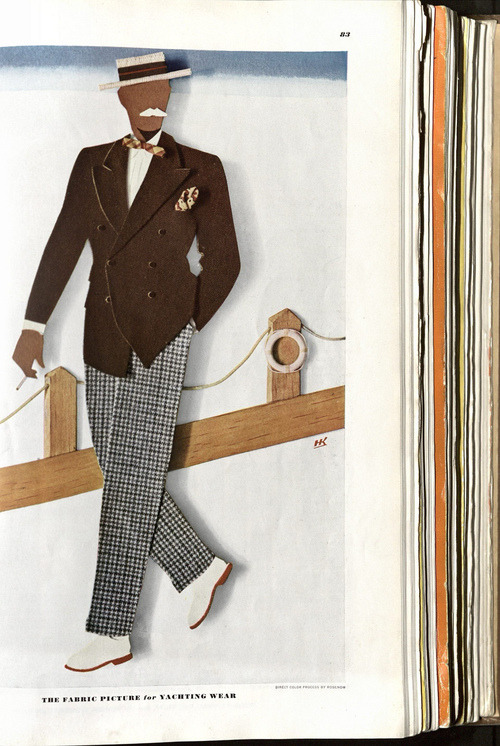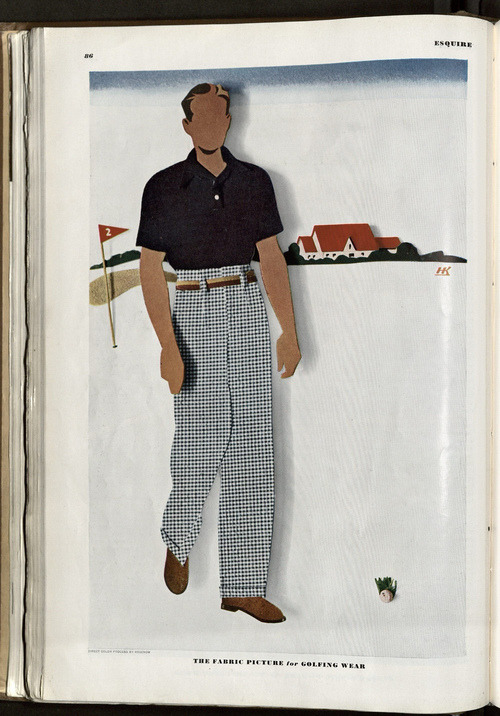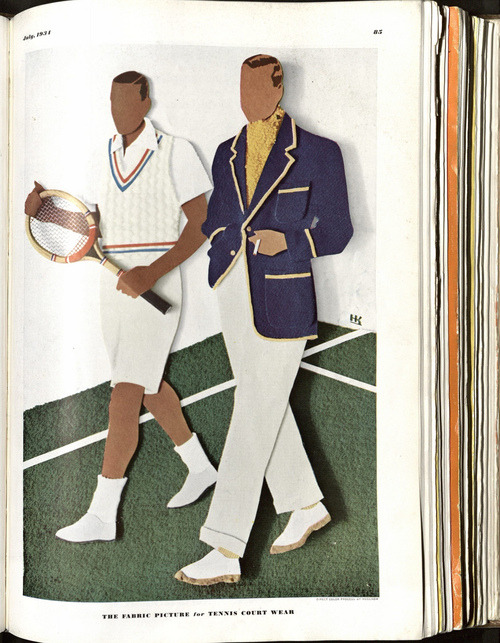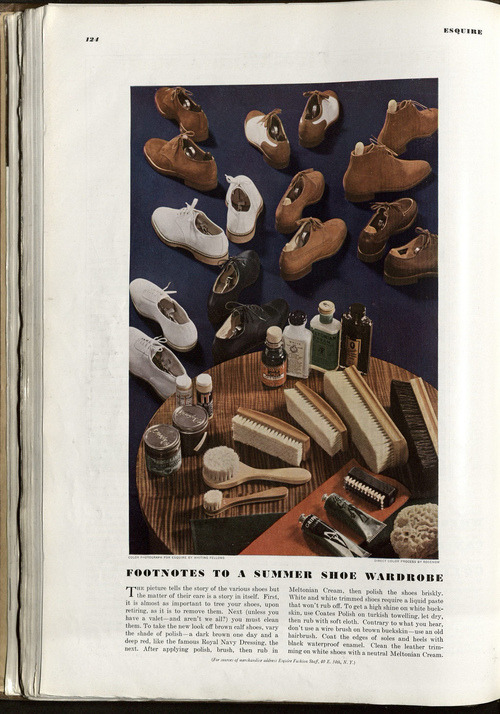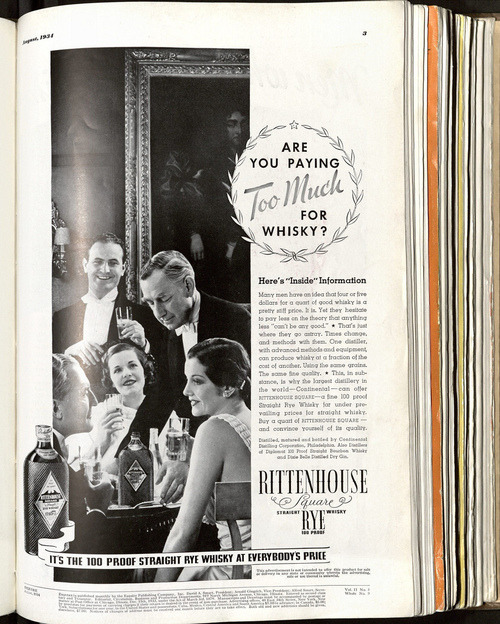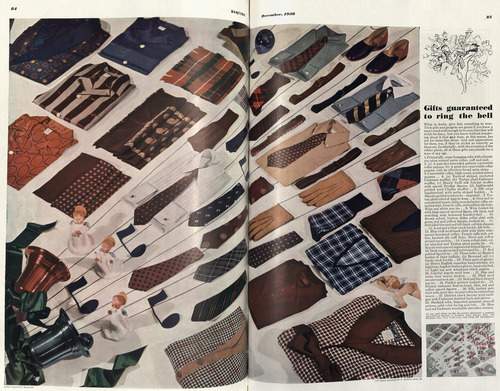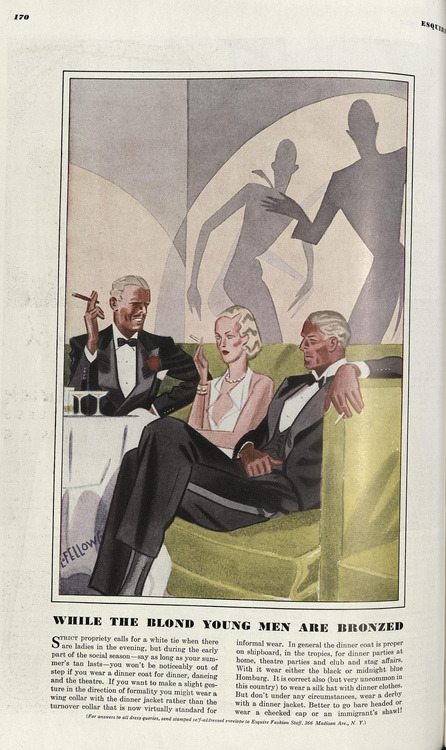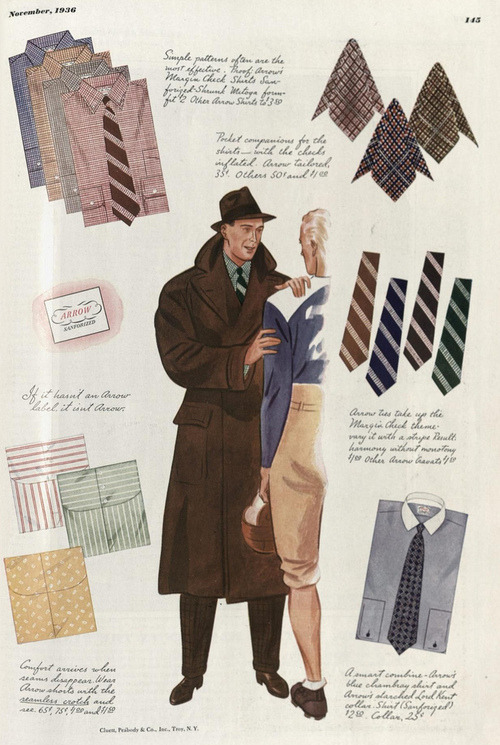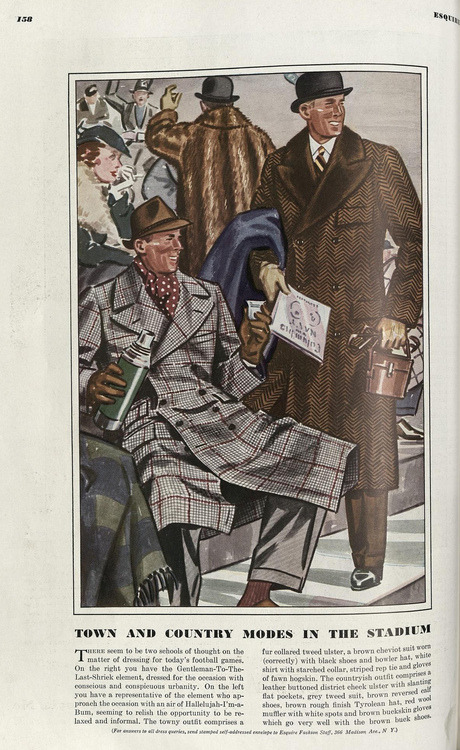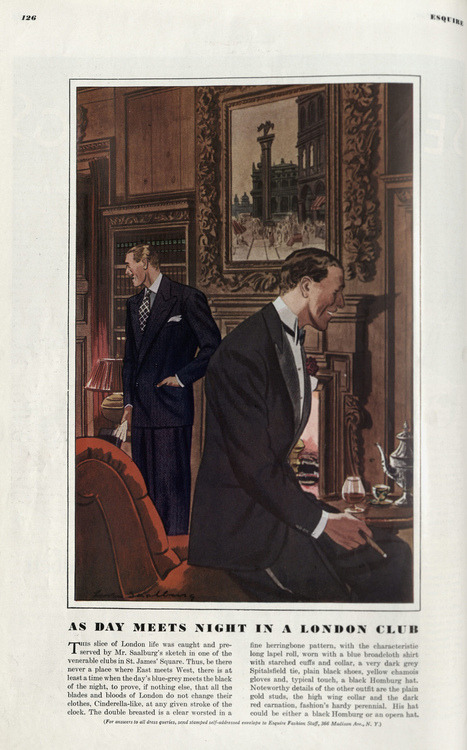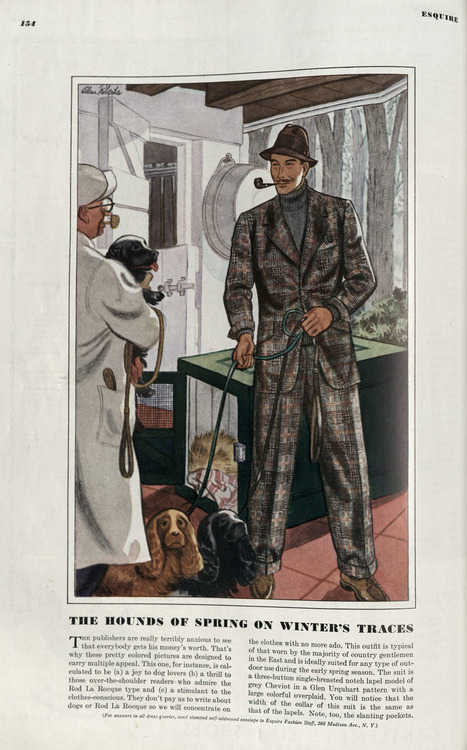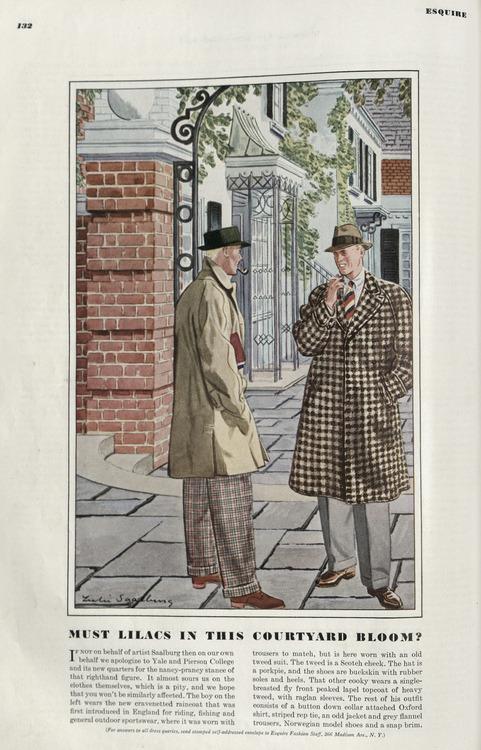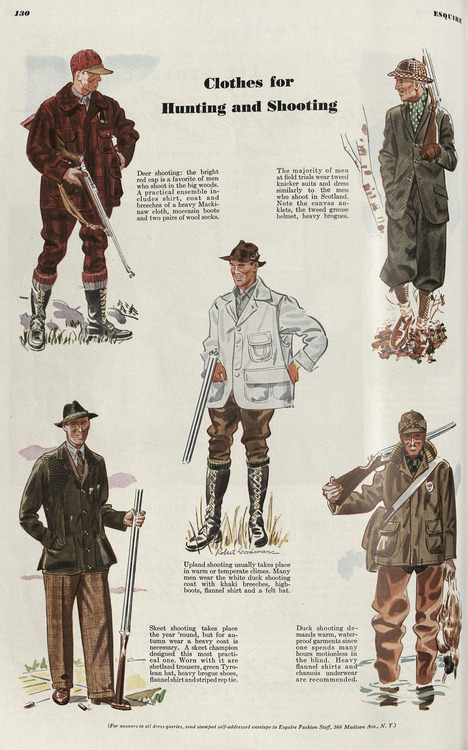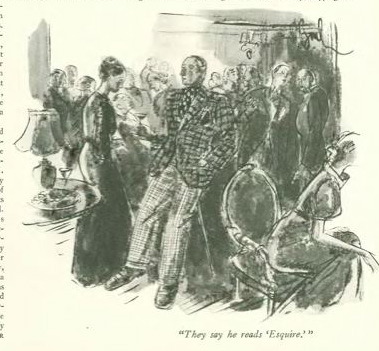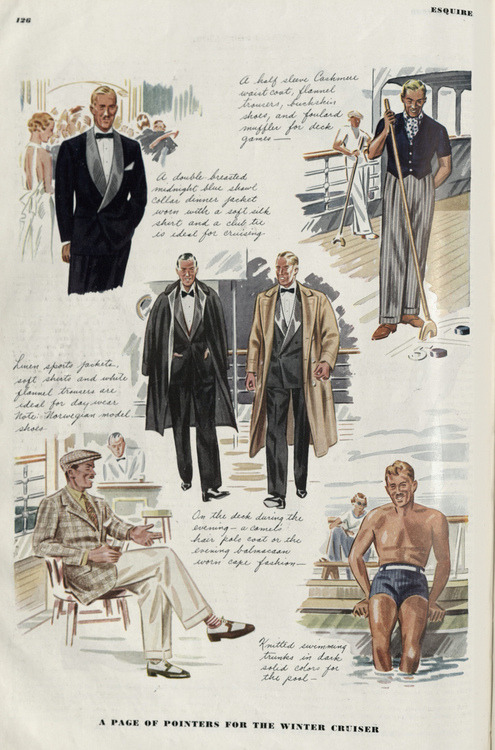
A friend of mine recently scanned some remarkable scans of old issues of Esquire and Apparel Arts, all originally published around the 1930s or so. Apparel Arts was a quarterly large-format publication, started by Arnold Gingrich, who was also the founder of Esquire. Where Esquire was aimed at the consumer, Apparel Arts was for the trade. You see, buyers who work for clothing stores today typically rely on lookbooks, tradeshows, and fashion magazines to decide what they should stock each season. This wasn’t so in the 1930s. Back then, small independent shops relied on Apparel Arts to figure out what the best dressed men wore, and consequently what they should offer to their customers.
For a number of reasons, the usefulness of Apparel Arts declined after the end of the Second World War, so it was transformed into GQ in 1957. One of the conspicuous things you’ll notice is that – along with scantily clad women – GQ today has small caption boxes listing the brands of the clothes they’re promoting. Fashion spreads will say things such as “Suit by Ralph Lauren $2,875; Shirt by Brioni $475; Tie by Zegna $185.” In Apparel Arts, there were no such captions. It was a publication simply about how to dress well given different settings.
It’s for this and many other reasons why men who enjoy classic men’s clothing often look back to Apparel Arts with fondness. These illustrations are also some of the few examples we have left for what we mean when we say “classic men’s dress.” This is the coat-and-tie look worn without the twee-ness of the modern GQ, the frumpiness of Men’s Wearhouse, or the peacocking of Pitti attendees. Though, it’s perhaps good to mention that the styles shown here were also the peacocking of their day. A friend of mine once emailed me a funny cartoon from a 1935 issue of The New Yorker, where a man is shown at a swanky social gathering while dressed in a peak lapel, windowpane jacket; polka dot ascot; and patterned trousers. A pocket square is spilling out of his breast pocket, and people around him are seen whispering, “They say he reads ‘Esquire.’” A modern version of this cartoon might show people saying, “They say he’s a blogger.“
In any case, enjoy these illustrations. My friend scanned hundreds of them, but for the sake of brevity, I’ve only posted about fifty here. Colin McDowell penned a nice piece today at The Business of Fashion, where he talks about how fashion reporting has suffered greatly from the decline of fashion illustration. One needs to only do a search on Google Images for old Vogue covers to see what he means. These, in some ways, are the menswear equivalents.



